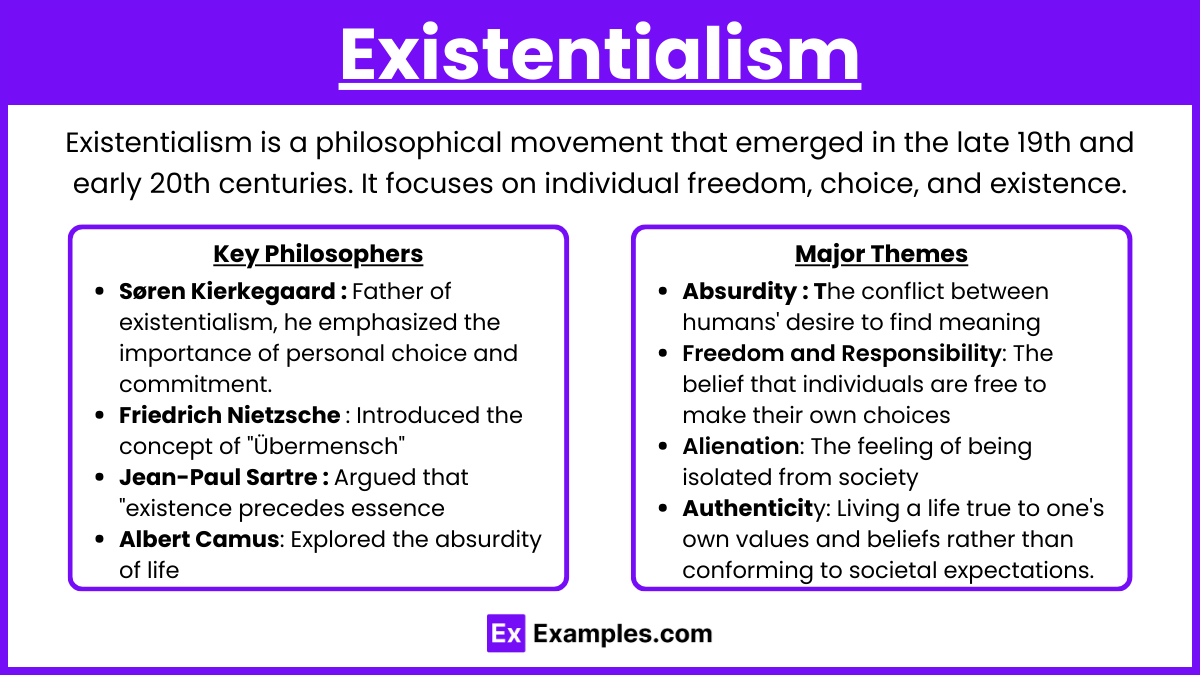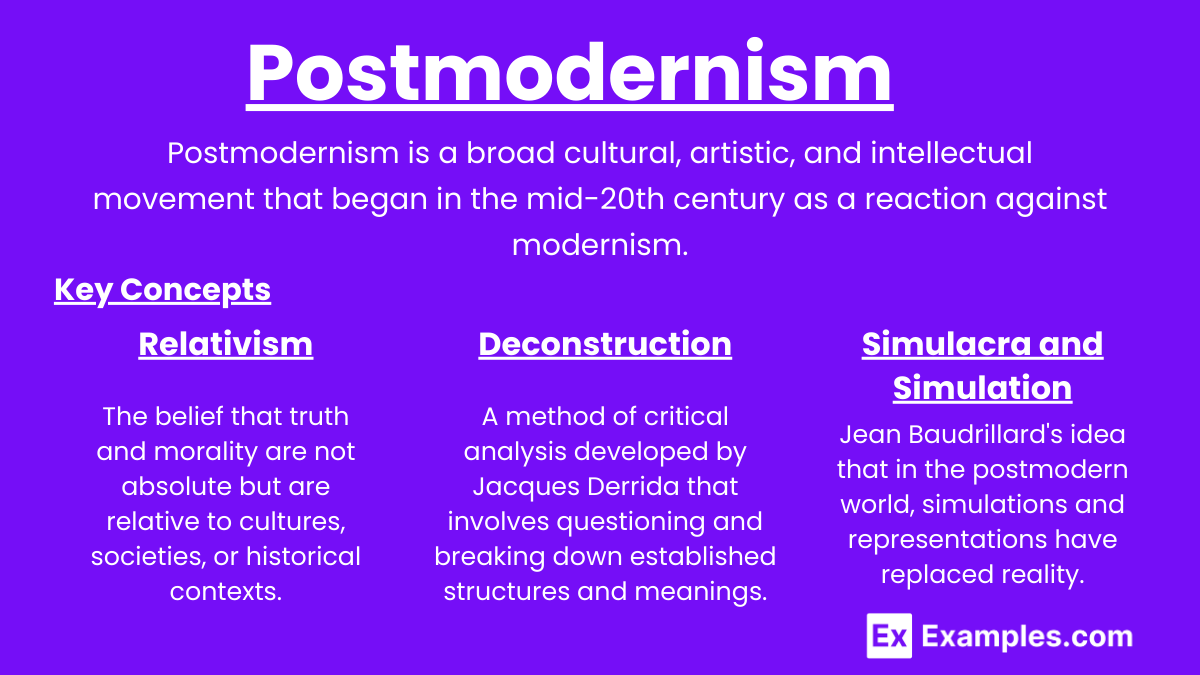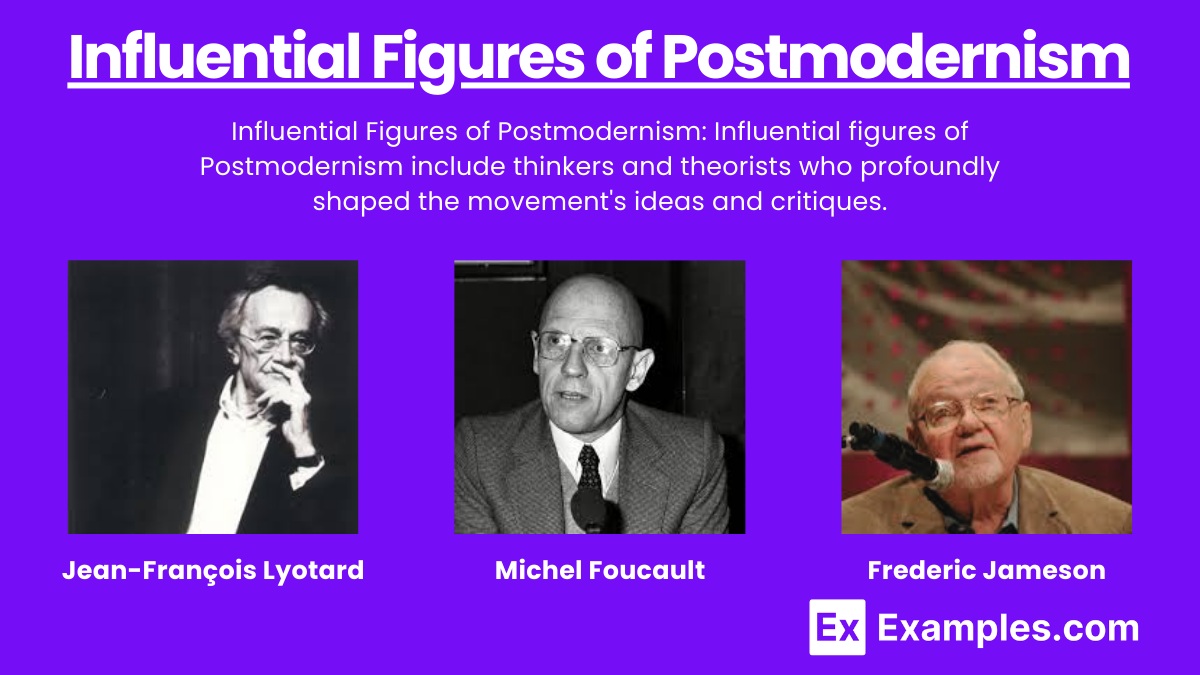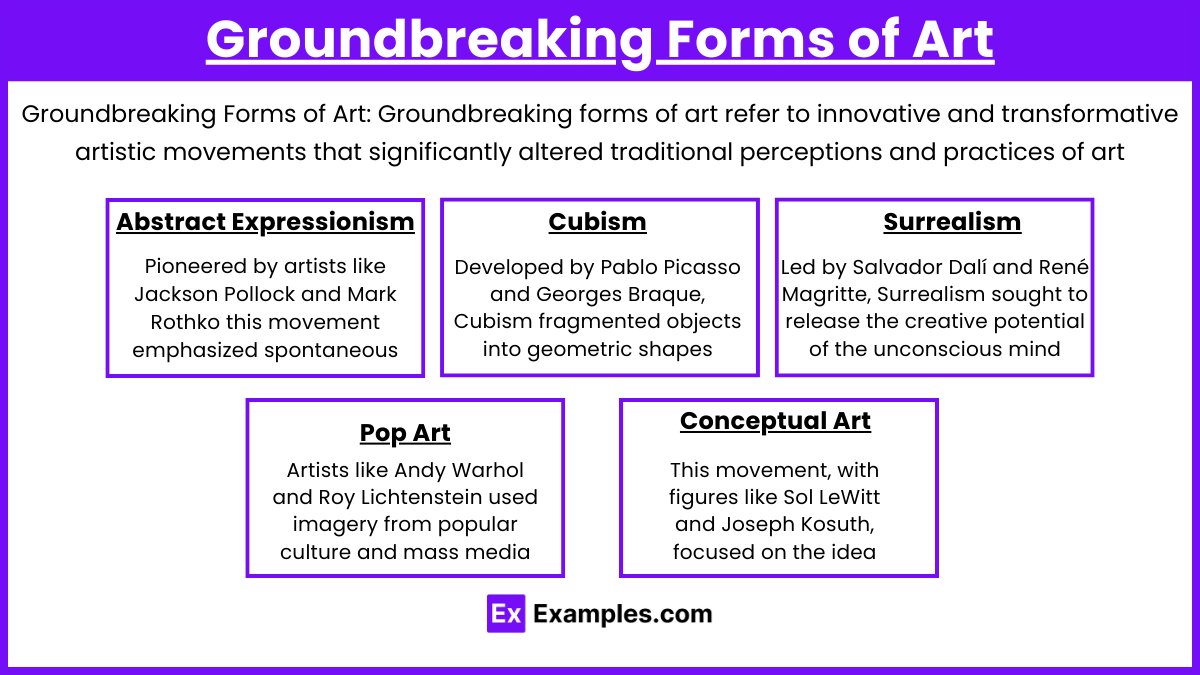Existentialism, Postmodernism, and Groundbreaking Forms of Art represent pivotal intellectual and artistic movements that significantly shaped the 20th century. In the context of AP European History, these movements provide insight into the philosophical, cultural, and societal shifts of the era. Existentialism explores individual freedom and the search for meaning, while Postmodernism challenges traditional narratives and embraces diversity. Groundbreaking art forms, from Dada to Conceptual Art, reflect and critique these evolving ideas, making them essential topics for understanding modern European history.
Learning Objectives
For the AP European History exam, you should learn about the philosophical underpinnings of existentialism and postmodernism, including key figures and concepts. Understand the historical context and impact of these movements on European thought and culture. Study how groundbreaking forms of art, from Dada to Pop Art, reflected and influenced societal changes. Analyze the interplay between these philosophical and artistic developments, recognizing their significance in shaping modern European history and culture. Mastery of these topics will deepen your comprehension of 20th-century European intellectual and cultural history.
Existentialism

Existentialism is a philosophical movement that emerged in the late 19th and early 20th centuries. It focuses on individual freedom, choice, and existence. Existentialists believe that life has no inherent meaning, and it's up to each individual to find their own purpose.
Key Philosophers
Søren Kierkegaard: Often considered the father of existentialism, he emphasized the importance of personal choice and commitment.
Friedrich Nietzsche: Introduced the concept of "Übermensch" and the idea that individuals must create their own values.
Jean-Paul Sartre: Argued that "existence precedes essence," meaning that individuals first exist and then define their essence through actions.
Albert Camus: Explored the absurdity of life and the human struggle to find meaning in a meaningless world.
Major Themes
Absurdity: The conflict between humans' desire to find meaning and the universe's indifference.
Freedom and Responsibility: The belief that individuals are free to make their own choices and must take responsibility for the consequences.
Alienation: The feeling of being isolated from society, oneself, or the world.
Authenticity: Living a life true to one's own values and beliefs rather than conforming to societal expectations.
Postmodernism

Postmodernism is a broad cultural, artistic, and intellectual movement that began in the mid-20th century as a reaction against modernism. It is characterized by skepticism toward grand narratives and ideologies, emphasizing pluralism, diversity, and irony.
Key Concepts
Relativism: The belief that truth and morality are not absolute but are relative to cultures, societies, or historical contexts.
Deconstruction: A method of critical analysis developed by Jacques Derrida that involves questioning and breaking down established structures and meanings.
Simulacra and Simulation: Jean Baudrillard's idea that in the postmodern world, simulations and representations have replaced reality.
Influential Figures of Postmodernism

Influential Figures of Postmodernism: Influential figures of Postmodernism include thinkers and theorists who profoundly shaped the movement's ideas and critiques. Jean-François Lyotard is known for his work on the "postmodern condition" and the decline of metanarratives, emphasizing the plurality of truth and skepticism of grand narratives.
Jean-François Lyotard: Known for his work on the "postmodern condition" and the decline of metanarratives.
Michel Foucault: Explored the relationship between power and knowledge and how they are used to control societies.
Frederic Jameson: Analyzed the cultural logic of late capitalism and its impact on postmodernism.
Groundbreaking Forms of Art

Groundbreaking Forms of Art: Groundbreaking forms of art refer to innovative and transformative artistic movements that significantly altered traditional perceptions and practices of art. Examples include:
Abstract Expressionism: Pioneered by artists like Jackson Pollock and Mark Rothko, this movement emphasized spontaneous, automatic, or subconscious creation, breaking away from representational art.
Cubism: Developed by Pablo Picasso and Georges Braque, Cubism fragmented objects into geometric shapes and presented multiple perspectives within a single artwork, challenging conventional representations of reality.
Surrealism: Led by Salvador Dalí and René Magritte, Surrealism sought to release the creative potential of the unconscious mind, producing dreamlike and fantastical imagery.
Pop Art: Artists like Andy Warhol and Roy Lichtenstein used imagery from popular culture and mass media, critiquing consumerism and the commodification of art.
Conceptual Art: This movement, with figures like Sol LeWitt and Joseph Kosuth, focused on the idea or concept behind the artwork, often deemphasizing the material aspect of the art object.
Impact on Society and Culture
Challenging Norms: These movements and artists challenged traditional notions of art, beauty, and meaning, encouraging viewers to question and think critically.
Cultural Reflection: Art became a way to reflect and critique societal changes, political issues, and cultural phenomena.
Interdisciplinary Influence: The ideas from existentialism and postmodernism influenced literature, film, architecture, and other art forms, leading to a more integrated and holistic cultural landscape.
Understanding existentialism, postmodernism, and groundbreaking forms of art is crucial for grasping the cultural and intellectual currents of 20th-century Europe. These movements not only shaped philosophical thought and artistic expression but also reflected and influenced broader societal changes. Preparing for the AP European History exam requires a deep appreciation of these interconnected themes and their lasting impact on the modern world.
Examples
Example 1: Existentialism in Literature: "The Stranger" by Albert Camus
Summary: This novel explores themes of absurdism, freedom, and alienation. The protagonist, Meursault, embodies existentialist philosophy by accepting the inherent meaninglessness of life and finding peace in his own existence.
Impact: Camus' work challenges readers to confront the absurdity of life and make personal meaning despite it.
Example 2: Postmodernism in Architecture: The Guggenheim Museum in Bilbao by Frank Gehry
Summary: This iconic building is characterized by its unconventional shapes, playful forms, and use of materials like titanium. Gehry's design breaks from traditional architectural norms.
Impact: The Guggenheim Museum has become a symbol of postmodern architecture, influencing the way buildings are designed and perceived worldwide.
Example 3: Groundbreaking Art: "The Fountain" by Marcel Duchamp
Summary: Duchamp's piece is a readymade sculpture consisting of a porcelain urinal signed "R.Mutt." This work challenged the conventional notions of art and artist.
Impact: "The Fountain" is considered a major milestone in modern art, questioning the nature of art itself and paving the way for conceptual art.
Example 4: Existentialism in Film: "The Seventh Seal" by Ingmar Bergman
Summary: This film features a knight playing chess with Death during the Black Plague. It delves into existential themes of life, death, and the search for meaning.
Impact: Bergman's film is a profound exploration of existentialist thought, influencing countless filmmakers and sparking deep philosophical discussions.
Example 5: Postmodern Literature: "Slaughterhouse-Five" by Kurt Vonnegut
Summary: This novel blends elements of science fiction, autobiography, and historical fiction, with a non-linear narrative structure. It tells the story of Billy Pilgrim, who becomes "unstuck in time."
Impact: "Slaughterhouse-Five" is a quintessential postmodern work, defying traditional narrative conventions and offering a fragmented view of reality.
Multiple Choice Questions
Question 1
Which of the following best describes the central theme of existentialism?
A) The belief in a predetermined destiny
B) The search for meaning in a chaotic world
C) The pursuit of technological advancement
D) The adherence to traditional social norms
Answer: B) The search for meaning in a chaotic world
Explanation: Existentialism is a philosophical movement that emphasizes individual existence, freedom, and choice. It is characterized by the belief that individuals are free and responsible for creating their own meaning and purpose in life, despite living in a seemingly irrational and chaotic world. Key figures in existentialism include Jean-Paul Sartre and Søren Kierkegaard, who explored themes of alienation, freedom, and the human condition.
Question 2
Postmodernism in art is often associated with which of the following characteristics?
A) A strict adherence to traditional forms and techniques
B) A focus on grand narratives and universal truths
C) An embrace of fragmentation, pastiche, and parody
D) A rejection of all forms of self-expression
Answer: C) An embrace of fragmentation, pastiche, and parody
Explanation: Postmodernism is a broad movement that emerged in the mid-20th century, challenging the conventions of modernism. In art, postmodernism is known for its eclectic approach, embracing fragmentation, pastiche, and parody. It often questions the notion of originality and authenticity, incorporating elements from various sources and blurring the boundaries between high and low culture. Artists like Andy Warhol and Cindy Sherman exemplify postmodernist art with their use of popular culture and self-referential techniques.
Question 3
Which groundbreaking form of art is characterized by its use of everyday objects and a focus on consumer culture?
A) Abstract Expressionism
B) Dadaism
C) Pop Art
D) Surrealism
Answer: C) Pop Art
Explanation: Pop Art is a visual art movement that emerged in the 1950s and 1960s, characterized by its use of imagery from popular and mass culture, such as advertisements, comic books, and everyday consumer products. Pop artists like Andy Warhol and Roy Lichtenstein aimed to blur the boundaries between "high" art and "low" culture by incorporating mundane objects and commercial elements into their work. This movement is noted for its bold colors, recognizable imagery, and commentary on consumerism and the media.


